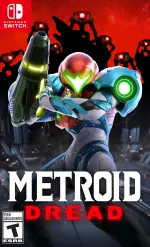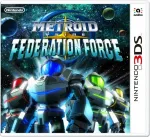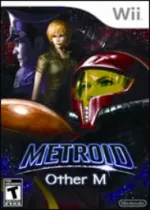
Ranking Every Metroid Game
Metroid is easily one of Nintendo’s underrated top-tier franchises; entries come few and far between compared to Mario, Zelda, and even Splatoon these days. It’s a series that rarely misses, with each entry ranging from a fun romp that’s worth playing to a consistently great experience than can be considered one of the greatest games of all time. Metroid has inspired an entire genre of games that mix platforming, action, discovery, and abilities unlocking even more options for the previous three pillars, and it even remains at the peak of that archetype in its latest entries. The mark Metroid has made on modern gaming is undeniable, so we’re here to celebrate the franchise surrounding gaming’s most beloved bounty hunter.
The following is our ranking of each official entry in the Metroid series, including the remakes and offshoots released throughout the years. Most of these games are exceptional in their own way, and your ranking may be different. If you have any thoughts on the order, feel free to share them in the comments below!
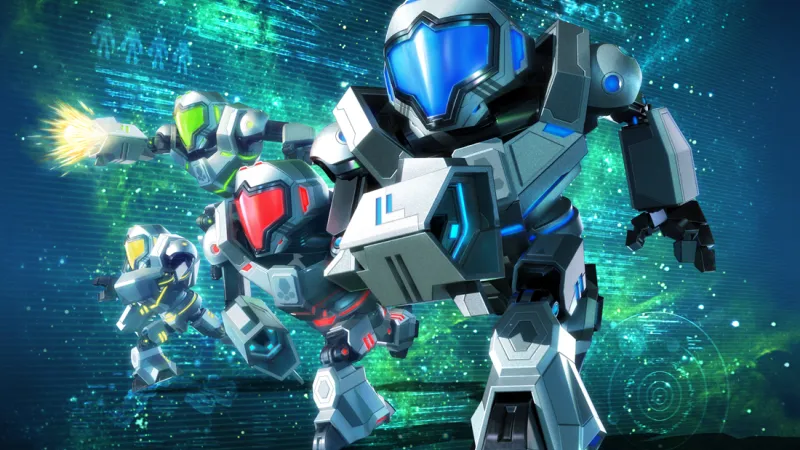
Metroid Prime: Federation Force
While not a disaster and actually quite fun at times, Federation Force was simply a Metroid game the public didn't want. Released in 2016 for the Nintendo 3DS, this offshoot of the Metroid Prime series is a four-player first-person cooperative shooter that puts players in the suits of Federation Marines to complete missions that task the team to complete puzzles or take out space pirates. The cardinal sin of Federation Force is simple: You didn't play as Samus, nor did it continue the series lore in a meaningful way. During an extended drought for mainline Metroid titles, Federation Force couldn't captivate audiences like Nintendo's adventurous bounty hunter.
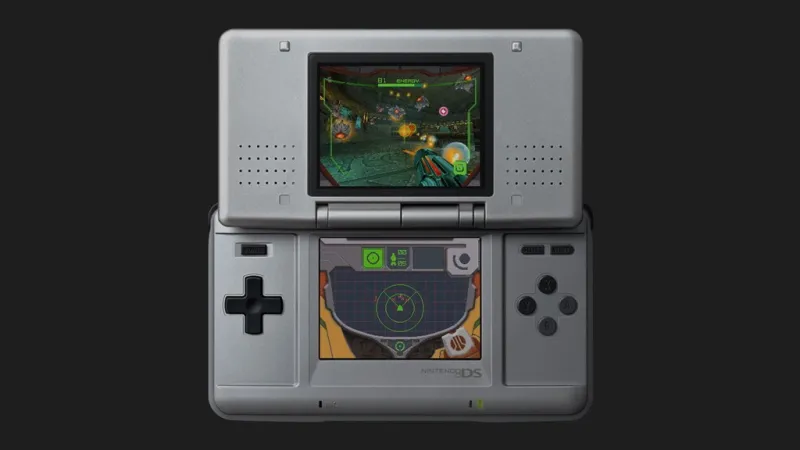
Metroid Prime: Hunters
Hunters is a cool experiment, playing with where the Metroid series could go on the Nintendo DS. Rather than opting for the easy 2D route with the classic platforming gameplay set on the top screen and the series’ trademark map system on the bottom, Nintendo chose to push the limits of the handheld device. It opted to create a first-person shooter in the image of the GameCube Prime titles, utilizing the touch screen and stylus for aiming Samus’ arm cannon for precision shots.
Going back to Metroid Prime: Hunters is a cumbersome experience that's far less fun to play today than when the DS was in its heyday. The way the stylus mode works, there’s a feeling of needing three hands to control it properly because there are controls mapped to the D-Pad, face buttons, shoulder buttons, and the touch screen. It should be celebrated for giving faces and names to more bounty hunters in the Metroid universe, but Hunters is far less desirable to play if you’re looking to play a Metroid in modern times
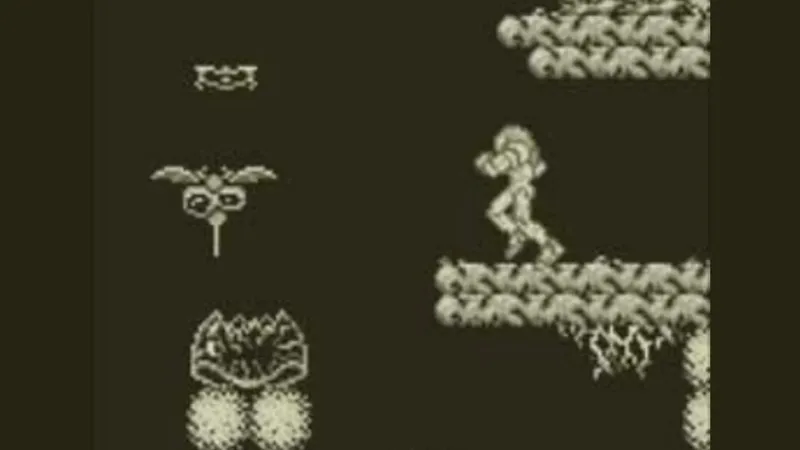
Metroid II: Return of Samus
Following up on the original Metroid is a tough task to undertake, let alone doing it on Nintendo’s primary 90s portable, the Game Boy. Producer Gunpei Yokoi and the Nintendo R&D1 team packed an entire Metroid adventure on the primitive handheld, and in a lot of ways it looks and plays better than the NES-quality benchmark the studio was going for. Following the events of Metroid, Samus lands on planet SR388, the Metroids’ homeworld, to eliminate the biological menace.
Considering the technology of the Game Boy, Metroid II is often hard to read in its original green-screen format, where backgrounds and characters don’t stand out enough to tell what’s going on when the action gets going. It also suffers from having the camera a little too close to Samus, making the world feel more claustrophobic than it really is.
Metroid II is incredible in terms of fitting an ambitious Metroid adventure on the Game Boy, but it’s been made obsolete in and out of Nintendo. Metroid: Samus Returns on 3DS adapts the game for a new generation, and if you can find it, the fan-made game AM2R also makes for a better way to experience Samus’ sophomore outing.
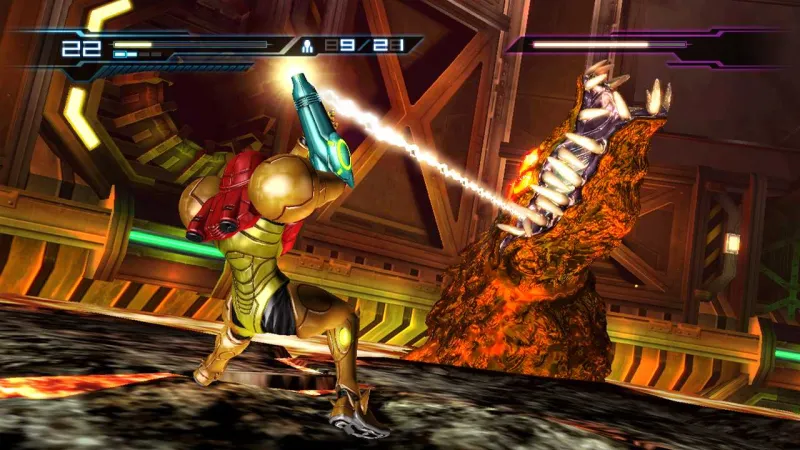
Metroid: Other M
In an intriguing move, Nintendo handed the development reins of Metroid over to the then masters of action games, Team Ninja to work on the most stylish entry in the series, Metroid: Other M. Taking inspiration from the 2D Metroid games while firmly keeping Samus in the realm of 3D movement, Team Ninja’s vision produced a unique experience for the franchise. It lets Samus run and gun around a mixture of side-scrolling environments while sometimes pulling the camera behind her shoulder for more intimate combat scenarios. It’s easily the most cinematic Metroid in the gameography, but its sometimes strange controls (having to swap how you hold the Wii Remote) and Samus’ troubling characterization hold Other M back from being one of the greats.
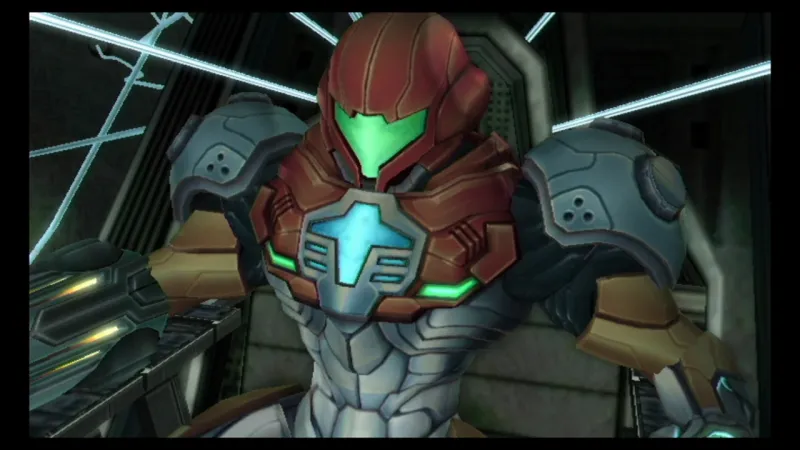
Metroid Prime 3: Corruption
Samus’ Wii debut largely pulled off the massive feat of translating the series’ gameplay to the Wiimote/Nunchuck’s motion controls. While ultimately not our favorite way to interact with the bounty hunter, the mechanics felt novel without feeling too gimmicky. The new Hypermode in particular was great, allowing Samus to unleash devastating attacks at the expense of health, adding a cool risk vs reward element to combat. In a weird but welcome twist, the story became a larger focus as Samus could converse with NPCs and we even got to see her hang around fellow bounty hunters for once. Corruption is one of the Wii’s best titles and was another strong selling point for the platform.
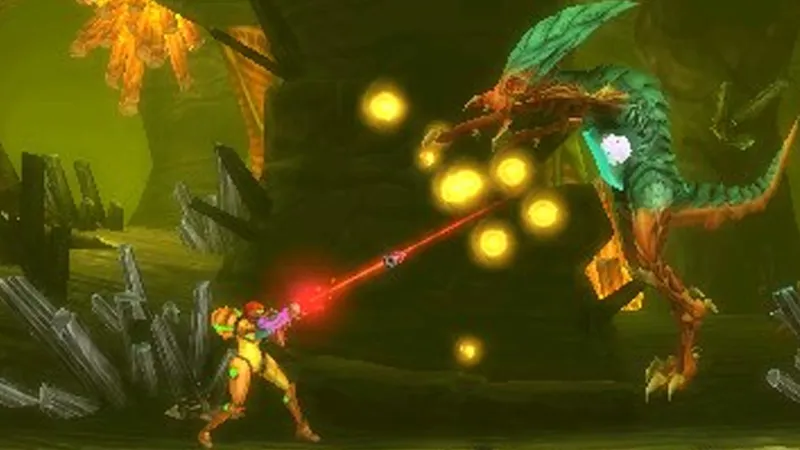
Metroid: Samus Returns
Samus Returns gave new life to the events of Metroid II with a complete remake created by then-first time Metroid developer MercurySteam. This 3DS title not only gave fans of the series hope that Nintendo was willing to revisit 2D Metroid games, but also put an exciting new coat of paint on a bygone classic. Like the Game Boy version, Samus is tasked with hunting down the Metroids on their homeworld, but this time Samus has new moves at her disposal, including a parry that stuns enemies long enough to take them out with a quick volley of plasma shots.
Samus Returns isn’t perfect, but a lot of what MercurySteam and Nintendo built here is present in the follow-up in Metroid Dread. Like just about any other entry on this list, it's still a fun adventure to pick up and play when needing to scratch that specific Metroid itch.
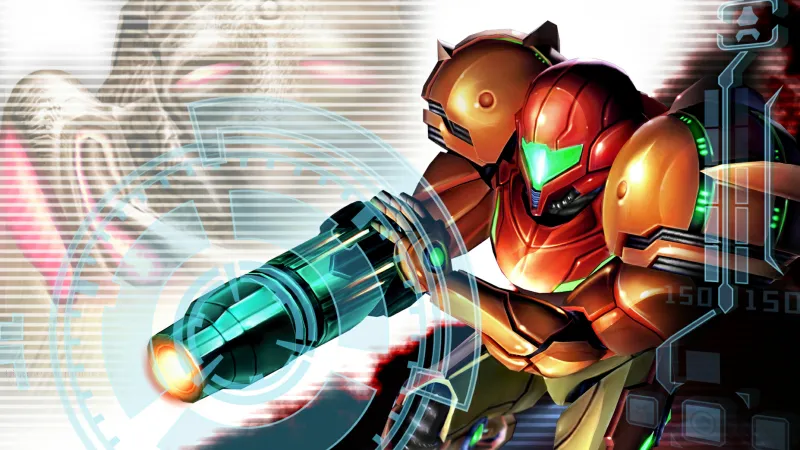
Metroid Prime 2: Echoes
Echoes successfully flips its predecessor's formula on its head by having Samus traverse two worlds, light and dark, to solve puzzles and open paths for the opposite realm. Echoes stands as the most difficult adventure of the Prime trilogy thanks to its challenging enemies, a dark world that constantly saps Samus of her health, and, of course, the debuting Dark Samus. This powerful doppelganger proved a formidable and memorable foe; who better to stand against Samus than herself? Echoes sometimes had us beating our heads against the wall, but it’s an exceptional adventure and a worthy follow-up.
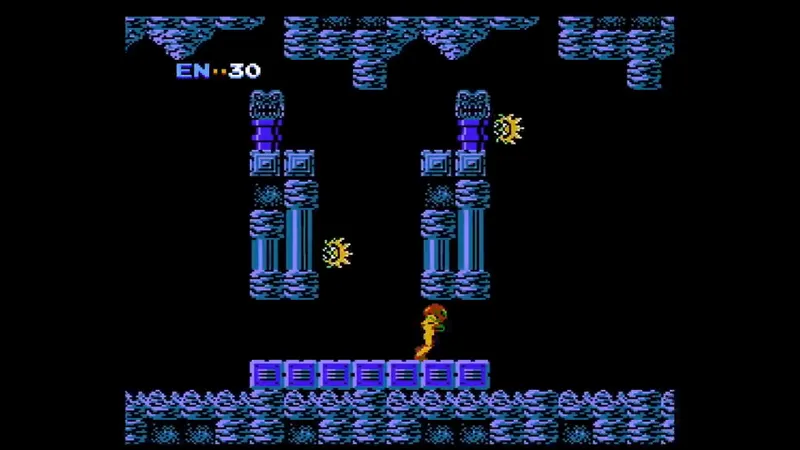
Metroid
Like others in the Nintendo franchise pantheon, Metroid debuted with a big splash on the NES, combining an action platformer with the smooth exploratory elements pioneered in The Legend of Zelda. Metroid introduced Samus, the series’ primary protagonist, a hardened bounty hunter sent on a mission to eliminate a group of Space Pirates who have captured the potential bio-weapons known as Metroids.
All of the core tenants of Metroid were there from the start; a big explorable map and obtainable abilities that unlock new areas all set within somewhat gritty scifi trappings. Metroid is a classic for a reason, and still quite playable today. However, its remake on GBA does make this adventure obsolete in many ways, and just about every offshoot and sequel improve on the formula, making the original somewhat hard to go back to. Still, if you’re looking to see where the series started, fire up the NES Switch Online library and give Samus’ first official adventure a try.
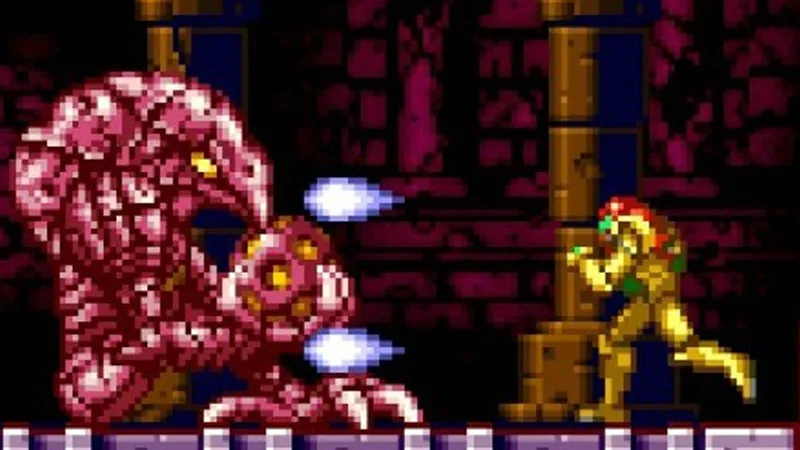
Metroid: Zero Mission
Zero Mission is a complete remake of the original Metroid with updated graphics, using the quality of life improvements and expansion on Samus’ powers from Super Metroid and Metroid Fusion to create the ultimate version of the original adventure available. This entry is also the debut of Zero Suit Samus, who in a separate story segment after the main campaign, has to survive making her way through a Space Pirate base with only stealth and stun gun at her disposal.
Unfortunately, Zero Mission is difficult to get a hold of these days. It only exists as a Game Boy Advance cartridge or downloadable through the Wii U Virtual Console.
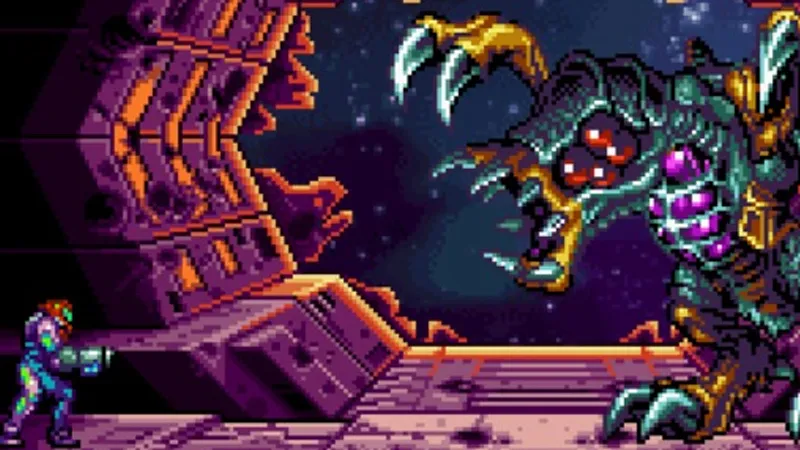
Metroid Fusion
Releasing the same day as Metroid Prime, Fusion acts as the direct sequel to Super Metroid, and carries on its legacy in almost every way. This Game Boy Advance entry returns Samus to the 2D labyrinths the series has embodied up until this point. Samus, after absorbing a baby Metroid’s DNA in the previous entry, is forced to contend with a new biological weapon, the parasite known as X. In a freak turn of events, the X have infected Samus and can replicate the bodies of their hosts, creating the greatest threat to the bounty hunter to date, a mimic of the known as SA-X that matches her capabilities.
Fusion is a great Metroid adventure that offers the typical suite of upgrades as other games in the series. It moves the narrative forward in a satisfying way and offered a full-featured Metroid game on Nintendo’s enhanced portable. You can’t go wrong playing Metroid Fusion, however, like Zero Mission, it's hard to get a hold of these days. Once again, a GBA cartridge or a Wii U are your main chances to play it.
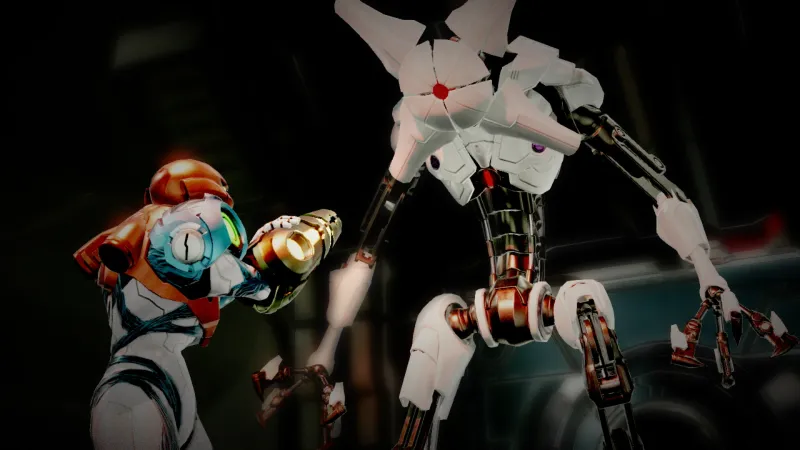
Metroid Dread
The day Nintendo announced Metroid Dread, we rejoiced. It had been 20 years since the last canonical entry, and this one would be the final in the current Metroid storyline. Nintendo paired up with Samus Returns developer MercurySteam to revive the franchise and return to the series' 2D roots.
Dread is a fun, wonderfully designed game with a huge winding map that takes Samus through the undergrounds of planet ZDR. There Samus must confront her history with not only the Metroids, but also the mysterious Chozos, dangerous Space Pirates, and Fusion's X parasite. Everything has been leading to these events, and Dread beautifully brings the saga to a head after Samus collects plenty of classic abilities along with new tricks like the Spider Magnet and the Phantom Cloak. With these new powers, she can take on the nearly indestructible EMMIs, a fleet of robotic sentinels protecting large sections of ZDR.
Dread is a wonderful return to form for the franchise, offering challenging boss encounters and plenty of secrets and shortcuts to be found throughout the map. We may have had to wait two decades for a new 2D Metroid, but Dread absolutely meets our lofty expectations and easily sits near the top of the series best.
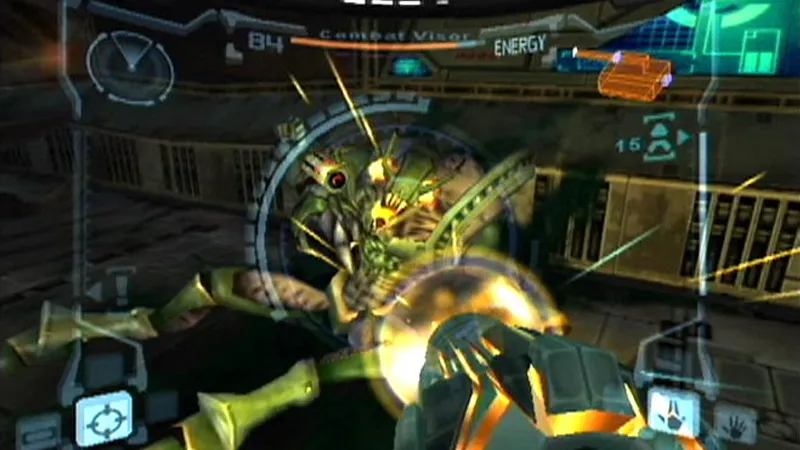
Metroid Prime
Retro Studios had the tall task of taking the exploratory formula from previous Metroids and modifying it to work within the burgeoning genre of first-person shooters. To the developer's credit, it absolutely nailed it. Samus' debut on the GameCube was also the first 3D entry in the series. Using new tech like the ability to scan items and organisms and the beautifully modeled and fleshed-out planet of Tallon IV, Prime feels like a revelation close to that of Super Metroid a handful of years prior. Taking place between the events of Metroid and Metroid II, Prime allows Nintendo to present an exciting Samus adventure before she goes all-in on exterminating the Metroid threat.
Prime hits higher on the list than Echoes and Corruption due primarily to its clean and successful execution of the series formula in 3D. While the sequels are good in their own rights, we have a special place in our hearts for our first Prime experience, right next to the greatest of all time, which happens to be the previous Metroid title released.
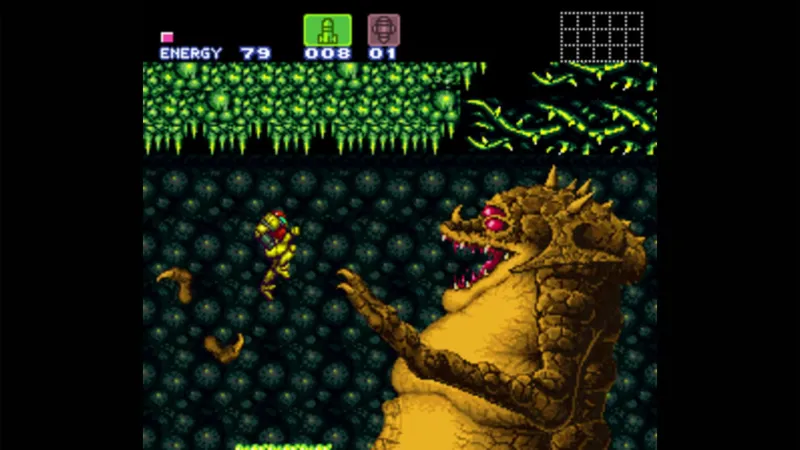
Super Metroid
In what feels like the true successor to the original game, Super Metroid is the blueprint for just about every Metroid game that comes after it. The planet Zebes is moody and atmospheric, mysterious, and each new room or corridor is exciting to traverse and explore. Samus' abilities are amped up compared to the previous two entries, introducing power-ups like the Super Missiles, Ice Beam, Space Jump, Grappling Beam, and the Power Bomb, setting the standard for the bounty hunter's loadout for decades to come.
It's a testament to its quality that Super Metroid is just as fun to play today as any of the more contemporary titles and holds up even for new players almost 30 years later. Other Metroid games may have improved the formula in some ways, but to us, nothing surpasses the total package that is Super Metroid.

Get the Game Informer Print Edition!
Explore your favorite games in premium print format, delivered to your door.
- 10 issues per year
- Only $4.80 per issue
- Full digital magazine archive access
- Since 1991

